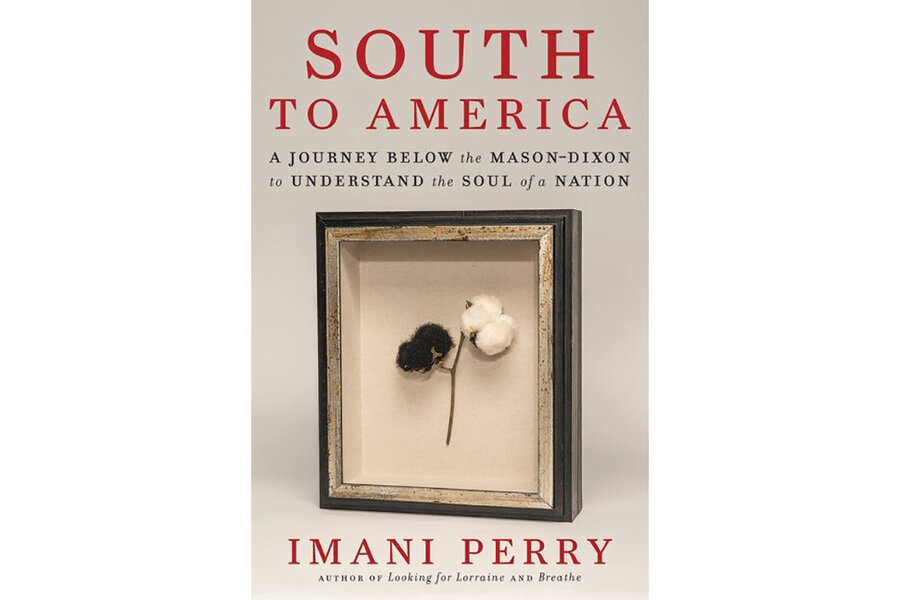A Black historian journeys south to confront the past – and present
Loading...
The American South has never fit neatly into the framework of the United States, even before enslaved Africans were brought to the nation’s shores. But to understand America, and especially the topic of race, requires looking at the Southern states, writes Imani Perry in “South to America: A Journey Below the Mason-Dixon to Understand the Soul of a Nation.”
Perry, who was born in Birmingham, Alabama, in 1972, is a professor of American studies at Princeton University. In this highly personal travelogue, she brings readers along to absorb her observations and internal dialogue.
Take for example her visit to Harpers Ferry, West Virginia, where abolitionist John Brown’s unsuccessful 1859 raid took place. Brown and his followers attacked a federal armory and arsenal in an attempt to seize weapons and arm Black men and others to fight against slavery. Instead, he was captured by Gen. Robert E. Lee and hanged for treason against the state of Virginia.
Perry wonders about present-day Confederate Civil War re-enactors, some of whom, like a man she calls Bob, return each year to Harpers Ferry to participate in mock battles. She chats with Bob, who goes into detail about the historical accuracy of his uniform. She writes, “As skeptical as I was of why anyone would want to playact at preserving slavery, I was endeared to him. He was friendly. Also, I was intrigued by him. ... I didn’t ask him why he wanted to be a Confederate, even though he was here at Harpers Ferry all the time, the place known for one of the greatest White allies to the cause of Black freedom.”
She confesses to not being up for asking confrontational questions on this occasion: “It was that my spirit, generations tired, didn’t want to.”
One of the things that is powerful about this book is Perry’s talent for juxtaposing history with the present. Sadly, as much as we want to think that hearts and minds have changed about white supremacy and racism, many of the voices in the book distinctly echo those of the racist past. We want to believe that the Jim Crow South doesn’t exist anymore. That’s what I want to hear, but I already know better. Perry lets us hear what the voices have to tell us, so we can make up our own minds about where we are and how far we’ve come.
Perry also examines her family history. She takes a DNA test and discovers that she has roots in 18th-century Virginia. This fact takes her into a discussion of the legacy of Thomas Jefferson and the similarities with her own white Virginia ancestors who fathered Black children. She dissects Jefferson’s “Notes on the State of Virginia,” published in 1781, where he states that he finds Black people inferior to white people. And she looks at how that narrative continues today.
There is no question that Perry’s book will make some readers uncomfortable. But the brutalities of slavery, racism, and the aftermath of the Civil War have always been uncomfortable.
“South to America” lays a foundation for those who are unfamiliar with the South’s history. Through her interviews and research, Perry ties the ends together, but there is no neat conclusion. It is heavy reading, but it is definitely worth the lift.








